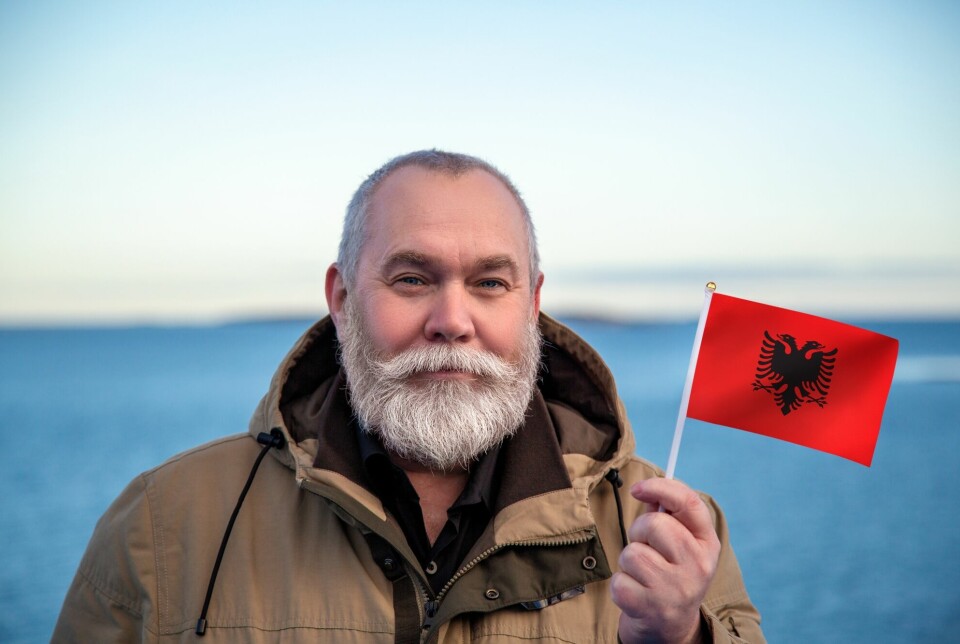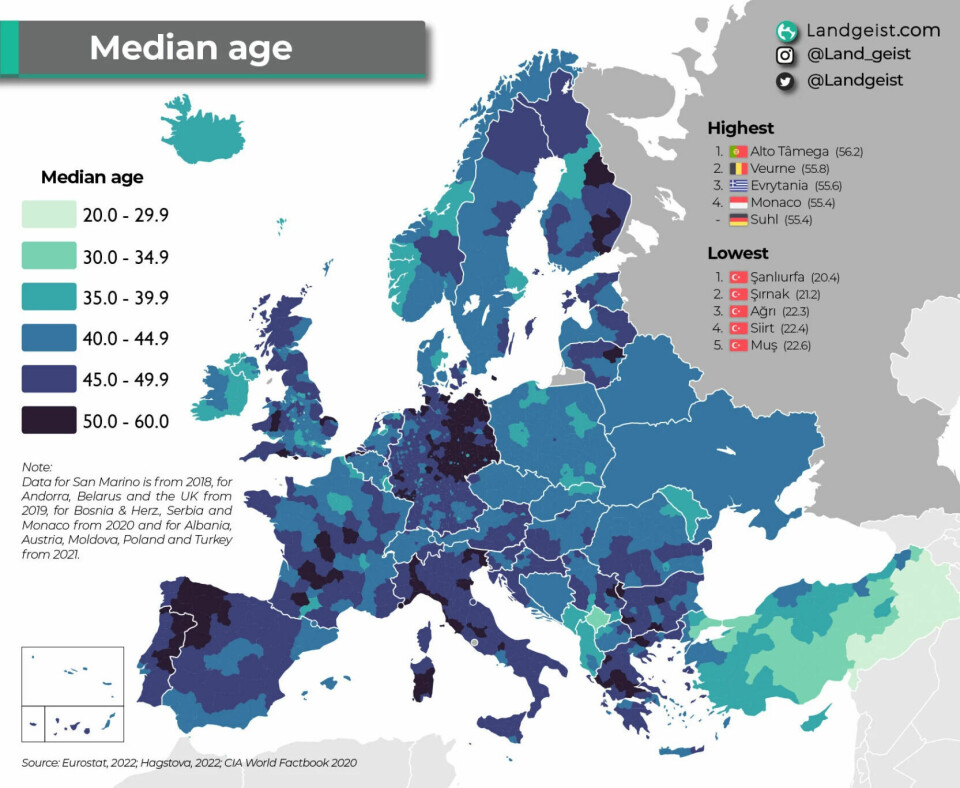
Norwegians are among the youngest in Europe
In several European countries, the median age is now over 45 years. In Norway, it is only 40 years.
If you travel to Southern Europe, you quickly notice that Europe is getting old.
However, something dramatic has also happened in Norway in recent years. More on that further down.
Oldest in Italy, Portugal, and Greece
- The highest median age is in Italy at 48 years.
- Portugal follows closely with 47 years.
- In Greece and Germany, it is 46 years.
The median age is the age ‘in the middle’. This means that half the population is older and half is younger. The median is often a better way to measure the average.

Southern Europe and East Germany
The average age of Europeans has increased by about a quarter of a year for each year that has passed in the last decades.
The oldest are now people in several Southern European countries. In the former East Germany, the age has also become high.
Kosovo, Moldova, and Turkey have the lowest median age in Europe.
The map below shows the median age in many regions of Europe. It was created by Landgeist and is based on data from the EU's statistical office Eurostat, among others.

Better healthcare
Better healthcare is an important reason why older people are living longer – and why the median age is increasing.
Another important reason is that the generation of baby boomers from the first post-war years is now old. Baby boomer is a term used because so many children were born when the war ended.
A third reason for the increasing average age is that the descendants of baby boomers have so few children.
Or wait a long time to have children.
Lowest in Oslo and highest in Innlandet
The median age in Norway in 2023 is 40 years, according to Statistics Norway. The figures show differences between median ages in all of Norway’s counties.
It is highest in Innlandet (45), Nordland (43), and Vestfold and Telemark (43).
It is lowest in Oslo (35), Rogaland (38), and Vestland and Trøndelag (both 39).
Fertility rate of only 1.41
Although people in Norway have a low median age compared to several other countries, the proportion of children in the population is decreasing faster in Norway than in most other European countries.
In 2022, the fertility rate in Norway was only 1.41.
This means that each woman is expected to have an average of just 1.41 children in her lifetime.
This number has never before been so low in Norway before.
In Europe, the average fertility rate is 1.5 births per woman.

What proportion of the population is young?
For urban planners, it is interesting to look at the proportion of young residents (0-14 years) – and the proportion of older residents (over 65 years) in a country.
The highest proportion of young people is found in Ireland, Iceland, Montenegro, Sweden, and Norway.
But in Norway, this could change quickly, since we have such low fertility rates.
- In 2012, the proportion of children (0-14 years) in Norway was 18.5 per cent.
- In 2022, the proportion of children had dropped to 16.9 per cent, according to Eurostat.
This decline in the proportion of children in the population in Norway is larger than in almost all other European countries.
What proportion of the population is older?
The largest proportion of older people in the population is in Italy (23.8 per cent), Portugal (23.7 per cent), Finland (23.1 per cent), and Greece (22.7 per cent).
The smallest proportion of older people in the population is in countries like Albania, Ireland – and Norway.
But only for now.
In Albania, the population is now ageing faster than in the rest of Europe.
In Norway, the proportion of the elderly within the total population is rising at a rate similar to the European average.

Europe will peak in 2026
The EU's statistical office Eurostat sees in its projections that the EU's population will reach a peak in the year 2026.
After that, the population in EU countries will decrease.
Equally interesting for urban planners going forward is how many older people there will be who will need assistance in the coming years.
Statisticians believe that the proportion of the population in EU countries that will be over 80 years old will increase from just over 6 per cent today to 14.6 per cent in the year 2100.
———
Translated by Alette Bjordal Gjellesvik
Read the Norwegian version of this article on forskning.no
References:
Statistics Norway: StatBank Norway.
Eurostat: Population structure and ageing, 2023.
Worldometer: Europe Demographics 2023.





































